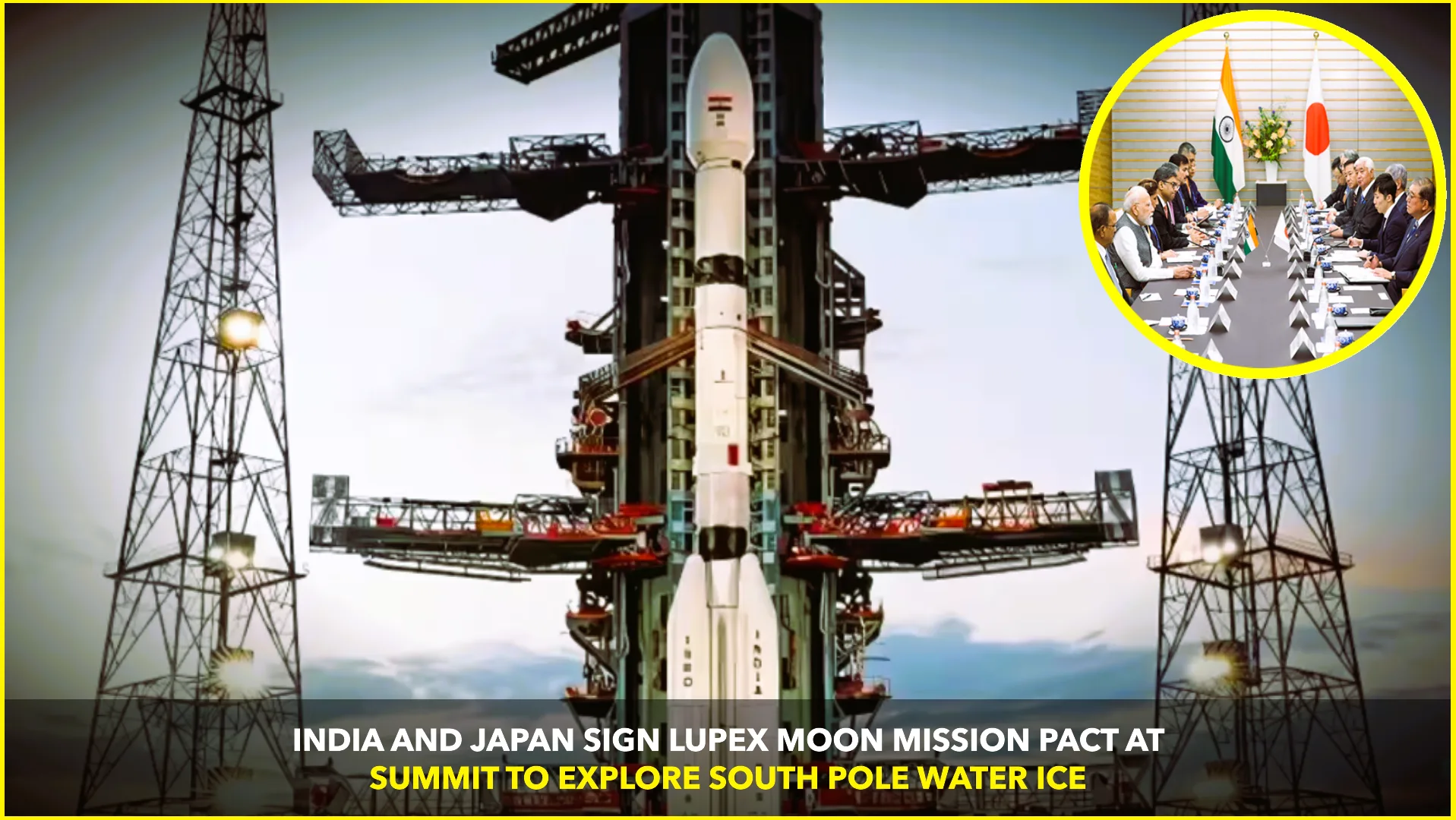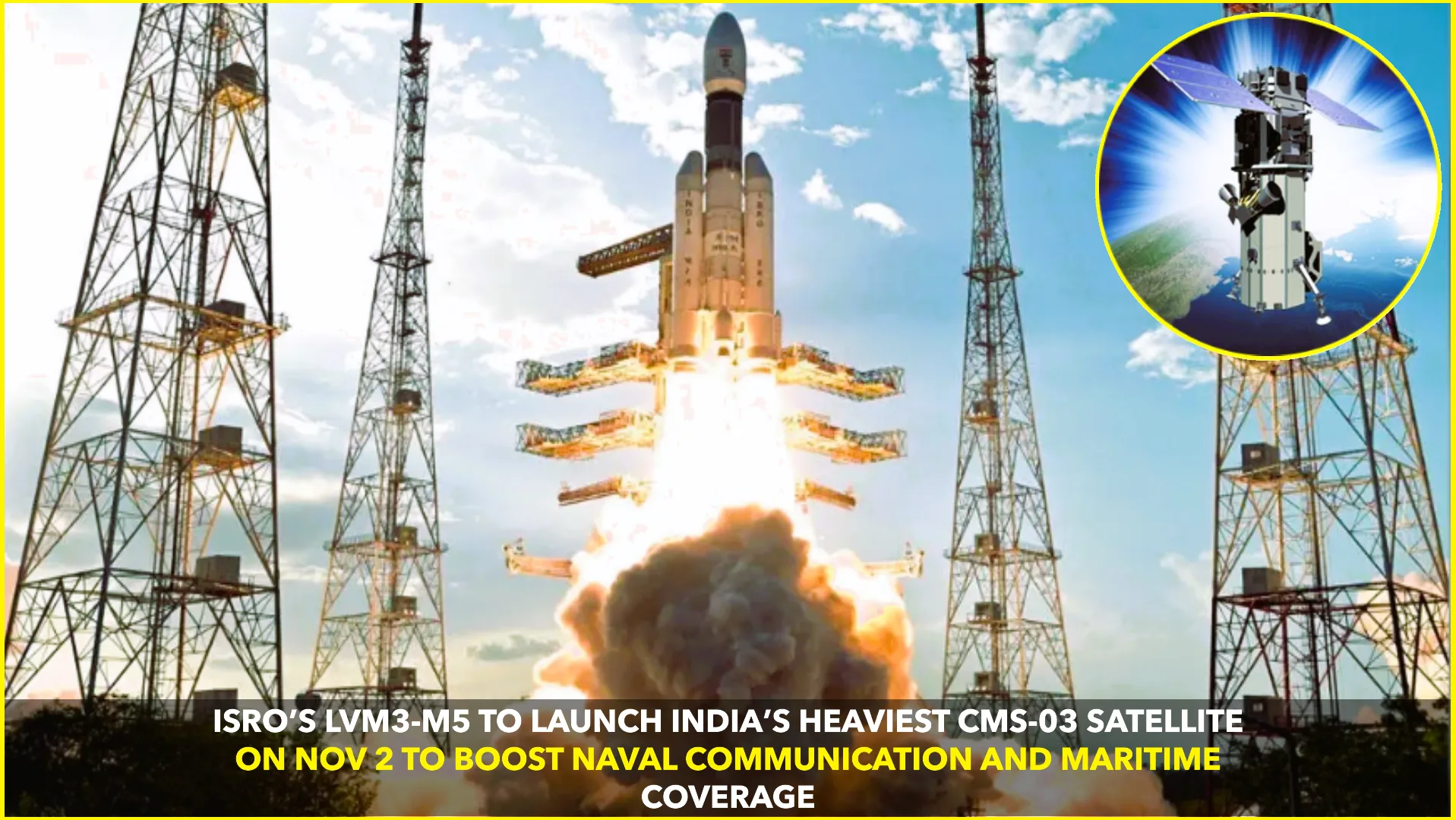At the 15th India-Japan Annual Summit held in New Delhi, India and Japan cemented their partnership in space exploration by signing the implementing arrangement for the Lunar Polar Exploration (LUPEX) mission—also known as Chandrayaan-5. This landmark agreement gives practical shape to the joint initiative between India’s ISRO and Japan’s JAXA to study the Moon’s south pole and search for water ice in permanently shadowed regions.The Economic TimesDD NewsMoneycontrol
Signing and Summit Context
The agreement was finalized during the summit attended by Prime Minister Narendra Modi and his Japanese counterpart, Shigeru Ishiba. This event marked the 15th iteration of the annual strategic dialogue, reinforcing their Special Strategic and Global Partnership. Alongside LUPEX, both nations signed multiple agreements covering defence, economic security, AI, critical minerals, and people-to-people exchanges.Prime Minister of IndiaPress Information BureauIndia Shipping News
Mission Goals and Design
LUPEX is engineered to explore one of the most scientifically promising areas of the Moon—the lunar south pole, believed to harbour ice deposits preserved in shadowed craters. Scientific instruments aboard the mission aim to identify and characterize water and other volatiles, offering crucial insights for future human lunar presence.
Under the agreement, ISRO will develop the lander component, while JAXA will supply the rover and deliver the mission via its H3-24L launch vehicle. Plans call for a ~250–350 kg rover capable of near-surface drilling and conducting in-situ chemical analyses.The Economic TimesWikipedia
Historical and Strategic Background
The LUPEX mission’s roots go back to 2017 and 2018, when ISRO and JAXA began feasibility studies and mission definition. Following Chandrayaan-3’s triumphant 2023 lunar south pole touchdown, India accelerated development of a heavier lander engine vital for a mission of this complexity. LUPEX received government approval in March 2025, and technical work has been underway since.Wikipedia
Leadership Statements
At the signing ceremony, Prime Minister Modi described the collaboration as a symbol of “mankind’s progress in space,” pointing to the synergy of Indian ingenuity and Japanese technology. He highlighted how LUPEX builds on Chandrayaan-3’s legacy. Ishiba emphasized that the partnership strengthens both countries’ vision for a rules-based Indo-Pacific, while accelerating scientific innovation.The TribuneDD NewsPrime Minister of India
Broader Cooperation Agenda
The LUPEX mission is one among a dozen agreements inked during the summit. These include strategic cooperation in clean energy, critical minerals, defence industry, digital partnership, AI, high-speed rail, and talent exchange. Together, the pacts offer a shared roadmap for the next decade, aiming for ¥10 trillion (around $68 billion) in Japanese private sector investment in India.
Notably, the two nations committed to exchanging 500,000 students and workers over the next five years, with 50,000 skilled Indians expected to contribute in Japan. Such exchanges are designed to deepen cultural and technological ties.All India Radio NewsPrime Minister of IndiaReuters
Scientific Implications and Timeline
LUPEX, scheduled to launch in 2028–2029, will yield detailed data on lunar water ice, an essential resource for future human exploration. The mission will test advanced navigation, sampling, and night-time operational capabilities on the rover and lander. ISRO and JAXA will also collaborate on technologies such as ground-penetrating radar, thermal imaging spectrometers, and mass spectrometers.Wikipedia
The discoveries could redefine our understanding of the Moon’s resource potential, offer opportunities for future crewed missions, and position both nations as leaders in space diplomacy and innovation.
What’s Next?
The immediate phase involves finalizing the engineering design, building prototypes for the lander and rover, and undergoing joint technical reviews. JAXA will finalize launch details while both agencies streamline payload contributions. As government agencies and industry firms mobilize, attention is growing globally—from space agencies to academic and commercial players—about the mission’s potential impact.WikipediaThe Economic Times
In sum, the LUPEX agreement signed during the 15th India-Japan Annual Summit marks a key turning point for space cooperation between the two nations. It reinforces a decade-long strategic alignment, brings together cutting-edge science and international collaboration, and opens a new frontier in lunar exploration.










